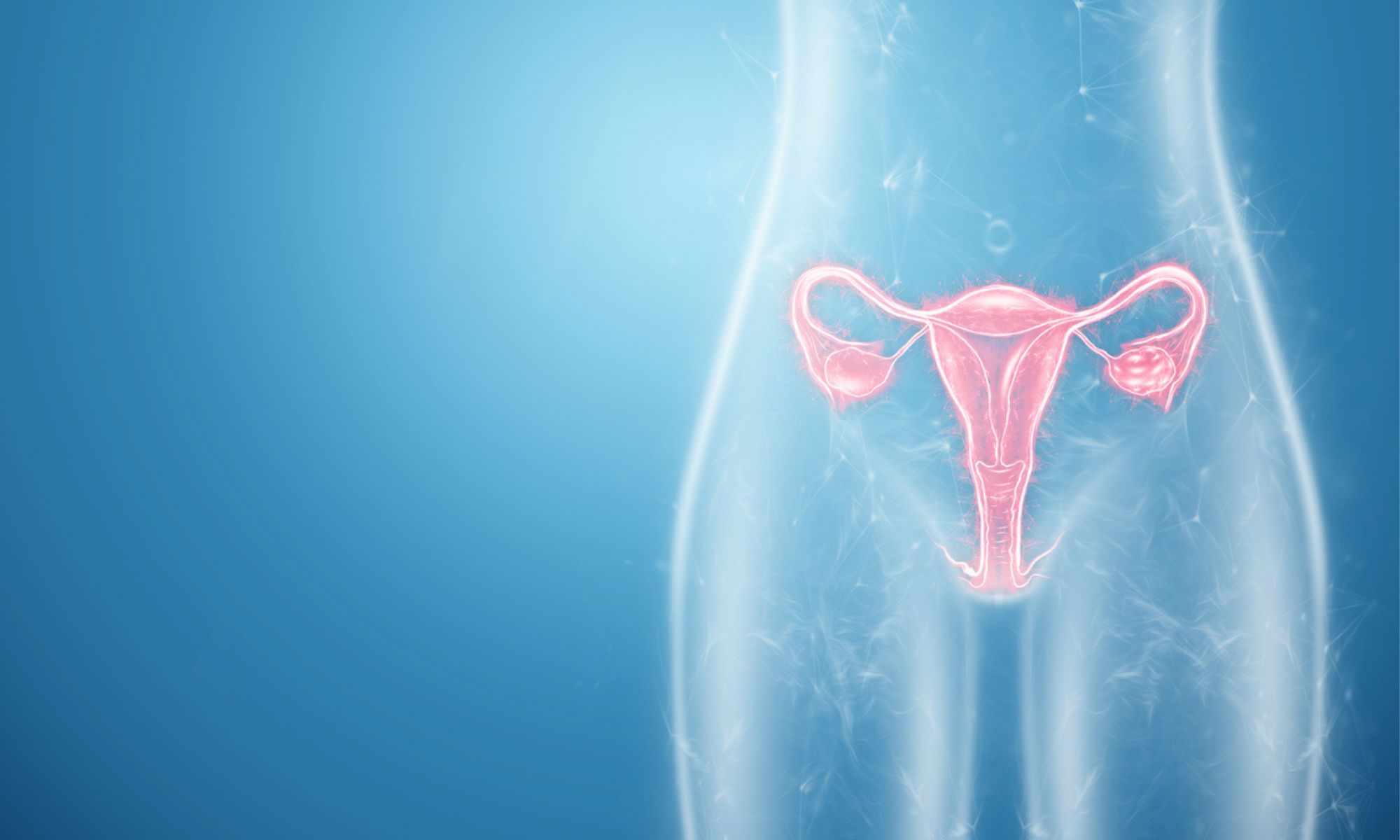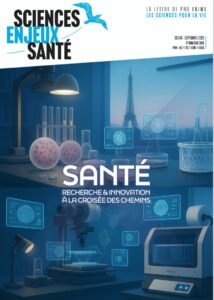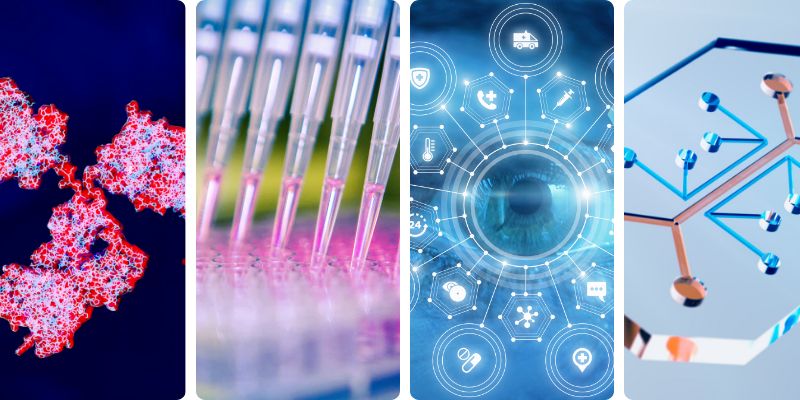
What ‘NAMs’ actually means?, Basement membrane extract-free database, Uterus-in-a-dish, Towards multimodal foundation models and more
News on non-animal methods
APRIL 28 - MAY 02, 2025NEWS, REPORTS & POSITION STATEMENTS
1. ‘NAMs’ – Background and definition
Over the past decade the term ‘NAMs’ has become a buzzword amongst scientists and organisations promoting the replacement of animal use in research and testing and the term has become more widely used in the scientific community. Yet, there still appears to be no consensus on what ‘NAMs’ actually means.
The Lush Prize’s short briefing looks at the background to the term, its varied (and sometimes conflicting) uses, and discusses how the term is used by.
2. Organoid groundbreaking studies in Nature
In one week, Nature published 3 papers on organoids, which is very exceptional. Is it because of the FDA announcement ? Even if we cannot tell, it still is a great signal.
The french company Cherry Biotech provides a full database of latest scientific papers on organoids with “Organoids Digest Extended”. In the latest episode of the Organoids Digest, the team deep dives into these 3 articles :
- Modeling human pain with organoids that recreate sensory pathways, Ji-il Kim et al., April 9, 2025 (shared on our previous NAMs newsletter)
- A new protocol keeps adult hepatocytes both functional and growing long-term, Hasan Al Reza et al., April 16, 2025
- Generation of human adult hepatocyte organoids with metabolic functions, Ryo Igarashi et al., April 16, 2025
TOOLS, PLATFORMS, CALLS
3. Computational Toxicology Communities of Practice
EPA’s Computational Toxicology Communities of Practice is composed of hundreds of stakeholders from over 50 public and private sector organizations (ranging from EPA, other federal agencies, industry, academic institutions, professional societies, non-governmental organizations, environmental non-profit groups, state environmental agencies and more) who have an interest in using advances in computational toxicology and exposure science to evaluate the safety of chemicals.
The Communities of Practice is open to the public. Monthly webinars are held on the fourth Thursday of the month, from 11 a.m. — 12 p.m. ET. Remote participation is available. For more information or to be added to the meeting email list, contact : Alexander “Sammy” Hanf.
4. Basement membrane extract-free database
In vitro innovations, like organoids and pluripotent stem cells, are transforming biomedical research. Yet many of these innovative methods still rely on animal-derived materials. Basement Membrane Extract (BME), like Matrigel, is one such material. BME has been widely used for over 40 years in 2D and 3D cell cultures to support cell growth and differentiation. But there are various ethical, sustainability, practical and scientific concerns associated with the use of BME.
The 3Rs Centre Utrecht is launching the Basement Membrane Extract-free Database, where scientists can find curated alternatives to BME. The BME-free Database is part of the 3Rs Research Tools Program together with the FCS-free Database, the Interspecies Database and the Humane Endpoints website. If a BME-free product of your company is not featured in the BME-free Database, you can contact them.
5. NAMs Public Calendar
To celebrate their 6 years of existence, the Centre for Predictive Human Model Systems (CPHMS) has launched the NAMs Public Calendar, a google calendar that aims to gather webinars, workshops and conferences on NAMs happening around the globe.
The next few months are already filled, but if your event or you know an event that is missing, you can share it by inboxing the CPHMS, or commenting on the linkedin post.
INDUSTRY, BIOTECH & PARTNERSHIPS
6. Opal Therapeutics’ uterus-in-a-dish
The FDA lately announced a historic shift in how it evaluates new drugs — particularly monoclonal antibodies — by phasing out traditional animal testing in favor of New Approach Methodologies (NAMs) like AI modeling and organoid-based assays.
At Opal Therapeutics, the FDA’s announcement couldn’t be more aligned with its mission. Rodent models fail to capture the complexity of female reproductive biology — rodents don’t even menstruate — and yet these models remain the default in women’s health research. Opal is building a “uterus-in-a-dish” platform using patient-derived uterine organoids to power drug screening and disease modeling. These organoids model key aspects of the uterus for gynecological conditions like endometriosis and fibroids. Because organoids are derived directly from patients, the resulting data is highly specific, personalized, and human-relevant.
7. Elix and PRISM BioLab partner to tackle hard-to-drug protein targets with AI
Elix and PRISM BioLab have announced a partnership aimed at advancing drug discovery for protein-protein interaction (PPI) targets — an area long considered difficult to address with small molecules.
The focus is on improving both the speed and success rate of discovering inhibitors for PPI targets, which play roles in cancer, fibrosis, autoimmune disease, and other conditions. PRISM’s scaffolds replicate key secondary structures like alpha helices and beta turns, while Elix’s AI engine is used to prioritize and optimize candidate molecules.
8. Illumina and Tempus partner to drive the future of precision medicine through genomic AI innovation
The sequencing platform Illumina and Tempus, a technology company leading the adoption of AI to advance precision medicine and patient care, announced a collaboration to accelerate clinical adoption of next-generation sequencing tests through novel evidence generation.
“By expanding our collaboration with Illumina, we are combining our strengths in technology and data analytics with their strengths in developing new sequencing technologies to drive forward innovation and advance precision medicine,” said Terron Bruner, chief commercial officer of Tempus.
SCIENTIFIC DISCOVERIES & PROTOCOLS
9. Deep learning-based malaria parasite detection
At the intersection of medicine and technology, researchers have tapped AI and real-word data to come up with a solution to the Venezuelan outbreak of malaria. They recently published a paper describing the development of a convolutional neural network (CNN) for automatically detecting malaria parasites in blood samples.
Previous models efficiently detected malaria parasites in red blood cells but had difficulty differentiating between species. In this new study, researchers propose a CNN-based model for classifying cells infected by P. falciparum, P. vivax, and uninfected white blood cells from thick blood smears. They are now developing a system based on real-world quality images to create a comprehensive detection tool for remote regions where trained microscopists are unavailable.
10. Towards multimodal foundation models in molecular cell biology
In a perspective article published in Nature, scientists envision developing multimodal foundation models, pretrained on diverse omics datasets, including genomics, transcriptomics, epigenomics, proteomics, metabolomics and spatial profiling. These models are expected to exhibit unprecedented potential for characterizing the molecular states of cells across a broad continuum, thereby facilitating the creation of holistic maps of cells, genes and tissues.
Context-specific transfer learning of the foundation models can empower diverse applications from novel cell-type recognition, biomarker discovery and gene regulation inference, to in silico perturbations. This new paradigm could launch an era of artificial intelligence-empowered analyses, one that promises to unravel the intricate complexities of molecular cell biology, to support experimental design and, more broadly, to profoundly extend our understanding of life sciences.


